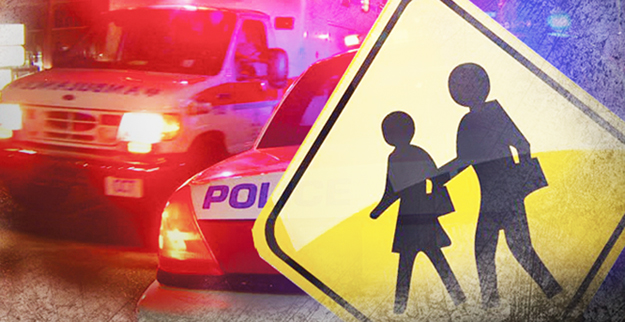School safety on Shelter Island: Plans in place and new initiatives

Schools across the country are looking at security protocols, as well as responding to the emotional effect on students after the mass shooting in a Texas school last week, where 19 elementary students and two teachers were shot dead.
Three years ago, Shelter Island School reviewed protocols and infrastructure to make the school a safer place. The district has multiple cameras installed throughout the building and around the campus. Special surfaces on first floor windows deter easy entry by anyone trying to enter the building.
A sign-in system at the entry is in place and requires that guests produce identification.
Four times a year, there are lockdown drills to teach students and staff where to go and how to behave in the event of a threatening situation, plus there are eight evacuation drills each year.
Suffolk County implemented a “RAVE Panic Button” system that is operable from mobile smartphones, allowing users to instantly notify police of emergencies.
Superintendent Brian Doelger, Ed.D., reported this week that other measures are in place, including:
• The school administration is meeting with Police Chief Jim Read and Detective Sgt. Jack Thilberg to go over school plans and to discuss all safety matters.
• A letter has been sent out to all parents to inform them of safety protocols and plans, with School Guidance Counselor Martha Tuthill’s and School Social Worker Michele Albano’s contact information.
• After that review, there will be a “refresher” with school staff and a report on it, either at the June School Board meeting or through a webinar.
• The PTSA is sponsoring a #WearOrange Day on Friday, June 3, to show support for National Gun Violence Awareness day.
• The National Honor Society and the Student Council are making and coloring butterflies to send to Robb Elementary in Uvalde, Tex.
Cameras and vehicle registration plate readers are installed at North and South Ferries, adding another level of safety on the Island.
Shelter Island Police Department officers have ongoing relationships with students. Chief Jim Read is often at the school, not to lecture, but to spend time with students and staff. Police in the community probably know the students as well as the teachers and staff do, Mr. Doelger said.
The relationships with police officers are a natural outgrowth of the Drug Abuse Resistance Education program (DARE) for elementary students. Officer Anthony Rando leads the program that was once taught by Chief Read, so the importance of building relationships is understood and encouraged from the top of the department.
Town Social Worker Lucille Buergers said last week that adults have problems processing the reality of mass shootings, so it is even more difficult for children to deal emotionally with horrific events.
“Experts agree that something that is going to get widespread attention and media exposure means that it’s important to raise the issue with children before they hear about it elsewhere,” Ms. Buergers said. “One of the ways that you can approach the subject is to ask your child what they’ve heard.”
If they haven’t heard anything yet, Ms. Buergers said, a good start is to let them know that something has happened “that has upset you very much and you think they should hear what happened from you so you can give them the most accurate information.”
Stay calm when speaking, the social worker advised, and let them know that you are open to any questions. “Expressing your own sad feelings is a healthy way to model talking about feelings,” Ms. Buergers said.
School Nurse Mary Kanarvogel said that being a small school, and the long tenure of many people on the staff, give Shelter Island School some advantages. “We’ve known a lot of the kids since they were little, so we know how many of them will react individually,” Ms. Kanarvogel said, adding that almost all children “will pick up on what’s happening, with TVs on and adults talking. But they might not really understand.”
She is in agreement with Ms. Buergers and other counselors that it’s important to listen to children’s concerns, and to respond in an age-appropriate way. “Most of all, you have to tell kids that they’re safe, and they’ll remain safe because we’re looking out for them,” Ms. Kanarvogel said.







